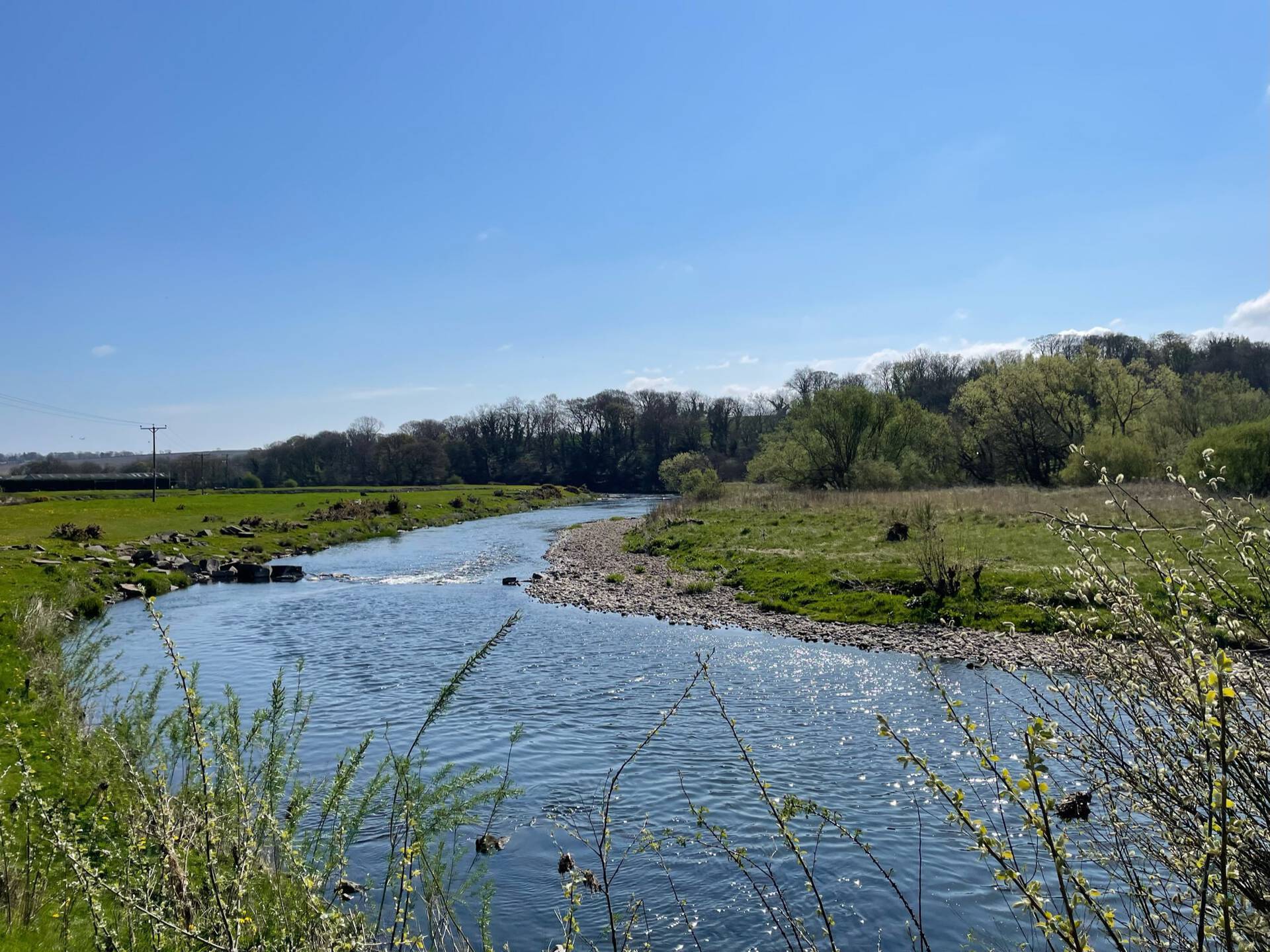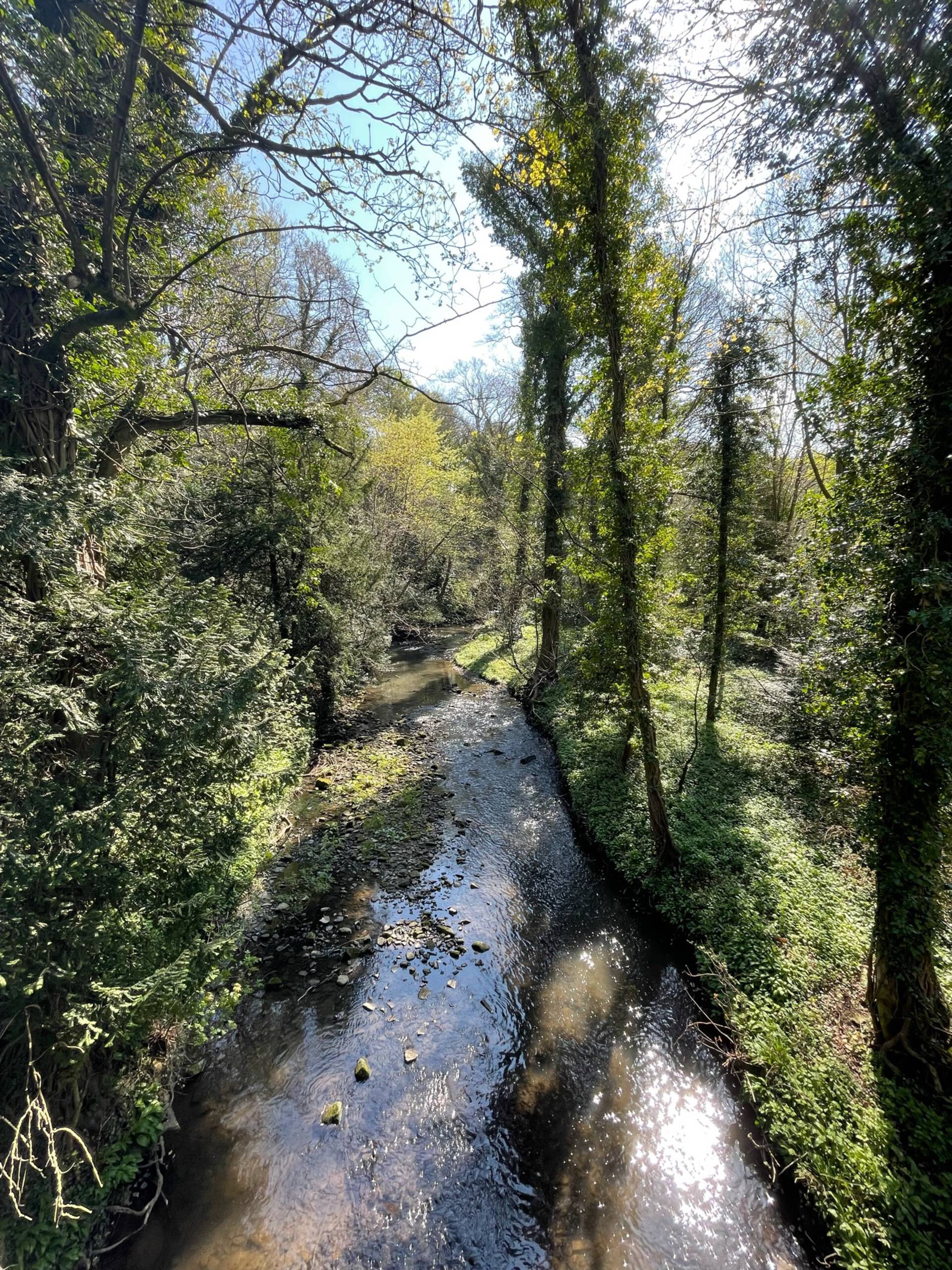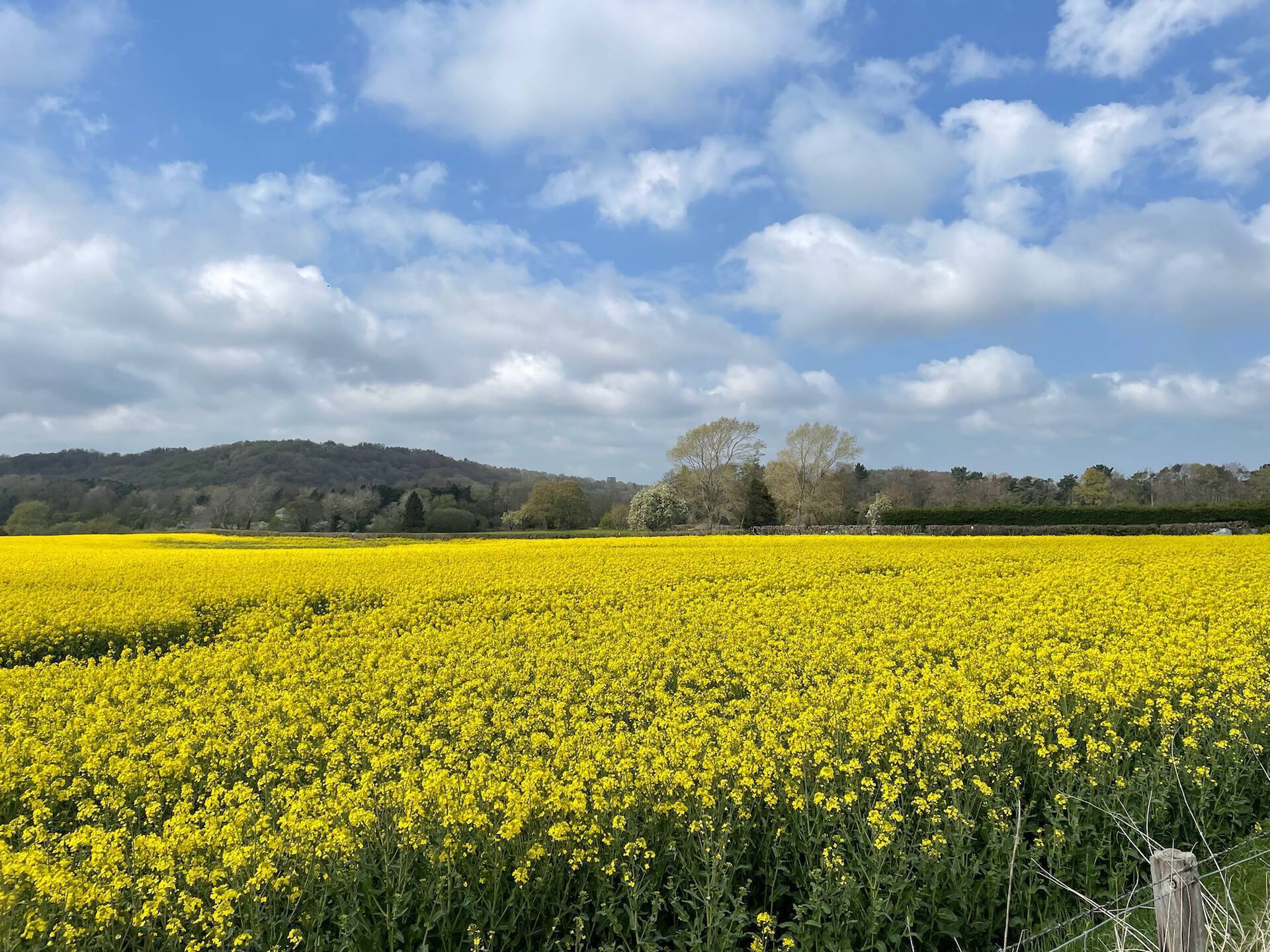Willington to Durham
Right. Enough of this County Durham limbo—it's time to make the final push on to the city of Durham itself. The bells of the cathedral and the medieval bridges await—not to mention a burger and a pint—at the end.

We left the car at Jubilee Park in Willington, the endpoint of our previous walk, and started off in the sunshine towards Page Bank Bridge, our first milestone of the day. The walk is flat along here, cutting across a couple of fields, cows lazing in the sun and the Wear burbling like something out of the Shire. Fields yielded eventually to a gravel track among some low trees before spitting us out at Page Bank Bridge.

The modern Page Bank Bridge was opened by Tony Blair (pre-Prime Minister days) in 1996, replacing a much older road bridge, itself converted from a rail bridge. This rail bridge served the old South Brancepeth Colliery (closed 1931) and the surrounding village of Page Bank. The old bridge was damaged in a flood in the 60s but was only apparently replaced 30 years later. Not much evidence of the colliery or the old town still stands—just a car park where the railway cottages used to stand.
Pressing on, we crossed yet more fields, passing by the site of an ostensible ford, before spotting the Croxdale Rail Viaduct in the distance. A little ways further on the true size of the viaduct made itself known to us—it's absolutely massive. The viaduct still carries the East Coast Main Line, so we stopped for a bit to reapply sunscreen, have a drink, and wait for an LNER train to show up. It didn't take long for one of the long 8-carriage trains from King's Cross to show up, making its way to Durham and then on to Edinburgh. Satisfied, we continued onwards.

A little further and we arrived at the medieval Sunderland Bridge, dating originally from the 1400s but substantially rebuilt in 1822. For much of its history Great North Road from London to Edinburgh for much of its history—at least up until the 1960s, when the new Croxdale Bridge was built and the A167 was re-routed over the newer bridge and the old was left as a tourist attraction. We crossed Sunderland Bridge and cut left onto the grounds of Croxdale Hall.

Croxdale Hall has been owned by the Salvin family since the 1400s or so—they continue to maintain it as a family home to the current day. Permissive footpaths cross the estate, from which you can view the hall itself, as well as a 12th-century chapel (over a hedge). Not much to report here; Croxdale's unassuming, tucked away behind trees and stone walls with big "Keep Out — No Access" signs. You can find an excessively detailed account of the Salvin family and Croxdale's history here.

We followed the tree-lined road up the hill to skirt the house, cut through some disused farm buildings, and continued up along the top of the hill between a forest and a wide field filled with sheep. A couple of runners along here—probably from the Durham cross-country team. No sight of the cathedral in Durham from here, no matter how much we peered through the trees. Reaching High Butterby Farm at length, we dropped into Shincliffe Wood for the descent towards Shincliffe—very familiar to anyone traveling through Durham to the upper reaches of the Way in Weardale. Near the bottom of the forest, we crossed a field of flax and finally caught our first glimpse of the blocky cathedral tower over Maiden Hill. Just a little ways left to go now.

There's a garden centre tucked alongside the Way just off the A177 in Shincliffe, so we had to dodge a couple of zealous Citroens seeking decorative mulches on our way out to the main road. Crossing the A177, we continued along a gravel track, much frequented by Dunelm dog-walkers. Across the Wear to our left, a football match was under way; from their cheers, we could tell that the home team doing well. Leaving behind the raucous football crowd, the bells of Durham Cathedral started ringing out in the distance, getting louder as we approached. We crossed what appeared to be an old railway embankment at one point: it turns out that this was an old railway line from Sunderland to Durham Elvet Station. Durham Elvet was closed to passengers in 1931 and then closed completely in the 1950s; in 1964 the station house was demolished and replaced by a block of council offices.
Under the bells, we also started to see the more enterprising of the rented rowboaters coming upstream from the city centre; continuing on, these rowboats became more and more common, until we came to a veritable rowboat traffic jam near where the Wear cuts south around the Durham Bailey. At this point, we cut off the Way, crossing a footbridge and wandering up to the Elvet Bridge—probably the oldest of the bridges over the Wear—for a well-deserved massive burger and a pint of lager at Tango.

Next
SpaceX has created a browser-based app simulating docking with the ISS, and it's a fantastic example of what is capable on the web.
Previous
April 2022 was a busy one: plenty done online and plenty done outdoors. Now if they could all be quite this way, I'd be well pleased.